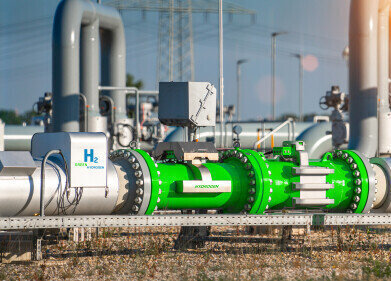Biofuel industry news
Why is Sulphur Bad for the Environment?
Nov 21 2021
Sulphur is one of 118 identified chemical elements and while it’s a naturally occurring substance, in certain scenarios it can have alarming environmental consequences. When sulphur-containing materials such as fossil fuels are burned, the element reacts with oxygen to create a chemical compound called sulphur dioxide (SO2). Classed as a pollutant by the Environmental Protection Agency, SO2 is a toxic gas that poses a threat to both environmental and human health.
-
Acid rain
Once released into the atmosphere, sulphur dioxide can react with air and water to form sulphuric acid. A main constituent of acid rain, sulphuric acid can cause major damage to forests, agricultural crops, waterways and other habitats.
-
Foliage damage
At high concentrations, atmospheric sulphur dioxide can cause acute damage to foliage. The toxic gas can bleach or dark pigmentation on the leaves of broad-leaved plants, as well as cause conifer needles to brown and wilt.
-
Air quality and visibility
SO2 is just one of several sulphur oxides that can react with other atmospheric compounds to form fine particulate matter. This can create a low-lying haze that can reduce visibility, block out sunlight and compromise plant growth. It’s not just cities that suffer from SO2 related haze, with many wilderness areas and national parks in the United States also plagued by air pollution.
The long-term effects of atmospheric SO2 are visible to the naked eye, with experts warning that the Taj Mahal in India is acquiring a yellow tinge due to excessive air pollution.
-
Respiratory illness
SO2 and other sulphur oxides can seriously damage the human lungs and respiratory system. As well as worsening existing conditions such as bronchitis and asthma, inhaling SO2 can cause acute lung damage.
Taking steps to slash SO2 emissions
While there are natural sources of SO2, the gas is primarily released by energy production, industrial activity and transport. In the UK, the Department for Environment, Food and Rural Affairs states sulphur dioxide is “predominantly produced from the combustion of coal or crude oil.”
To address SO2 emissions from the energy industry, the British government has introduced caps on the legal sulphur content of fuels and shutdown most coal-fired power stations. Between 2012 and 2019, sulphur emissions dropped by 65% thanks to the widespread closure of coal plants. Policymakers are continuing to take steps to slash SO2 emissions, with a goal to reduce emissions by 88% by 2030, compared to 2005 statistics.
Making the switch to biofuels
Despite taking steps to reduce sulphur emissions, the chemical element continues to pose a serious environmental threat. Over the past decade biofuels have emerged as an exciting alternative to fossil fuels. Find out more about the latest industry developments in ‘Recent Advances in the Realm of Cloud Point and Pour Point Testing Specifically as it Relates to Biofuels.’
Or, if you want to know more about sulphur in general, check out 'A Complete Guide to Sulphur in Fuel.'
Digital Edition
PIN 26.1 Feb/Mar 2025
March 2025
Analytical Instrumentation - Elemental Analysis for Quality and Process Control at Refineries, for Lubricants and Wear Metals in Engine Oils - Synthetic Lubricants: New Developments - Scaling...
View all digital editions
Events
Apr 02 2025 Saigon, Vietnam
Apr 02 2025 Atyrau, Kazakhstan
Apr 08 2025 Birmingham, UK
Apr 08 2025 Kielce, Poland
Apr 08 2025 Ravenna, Italy



















